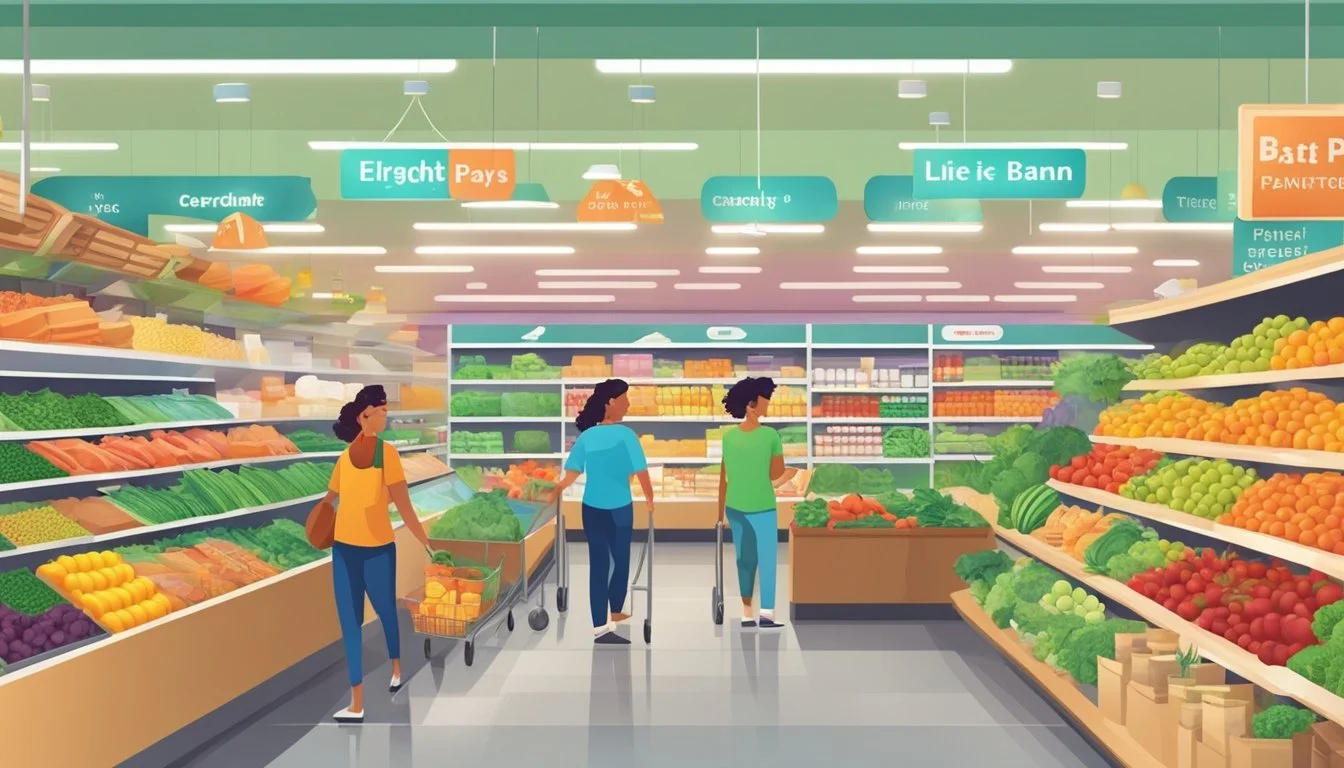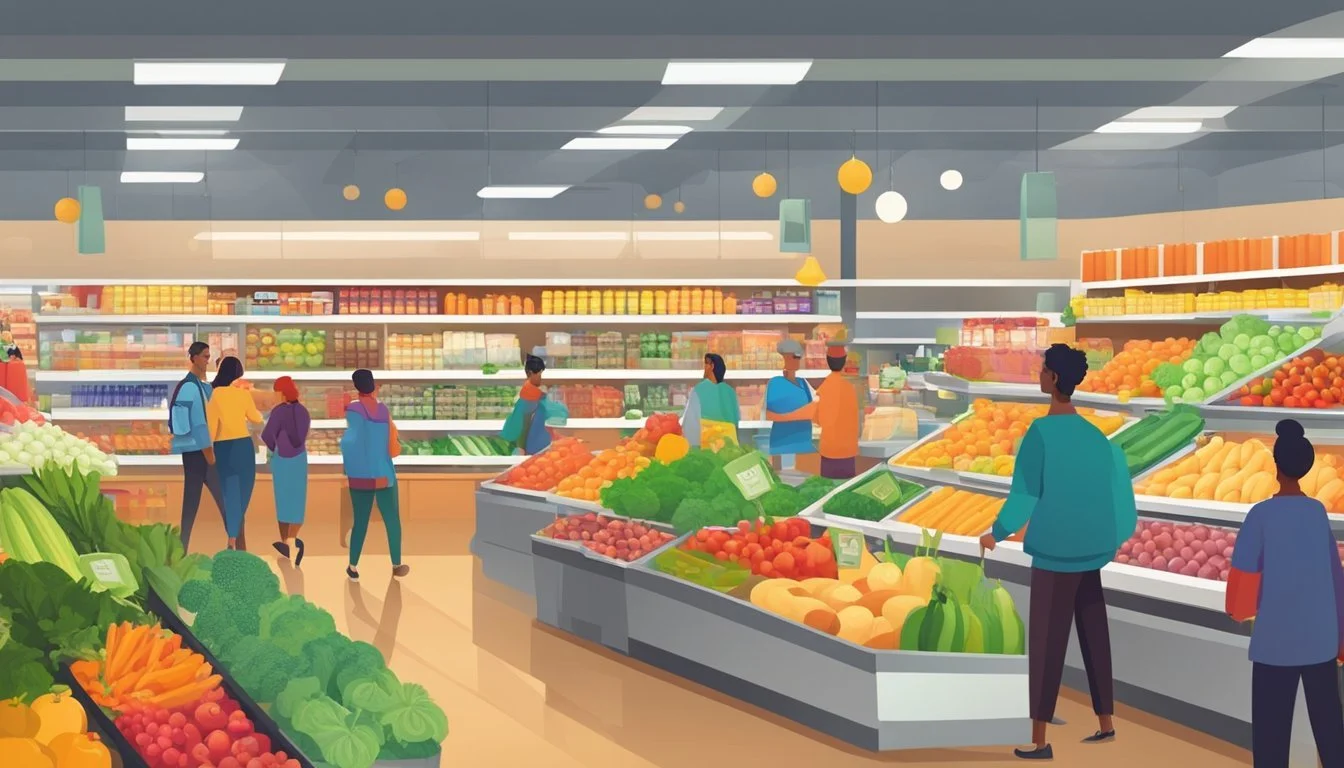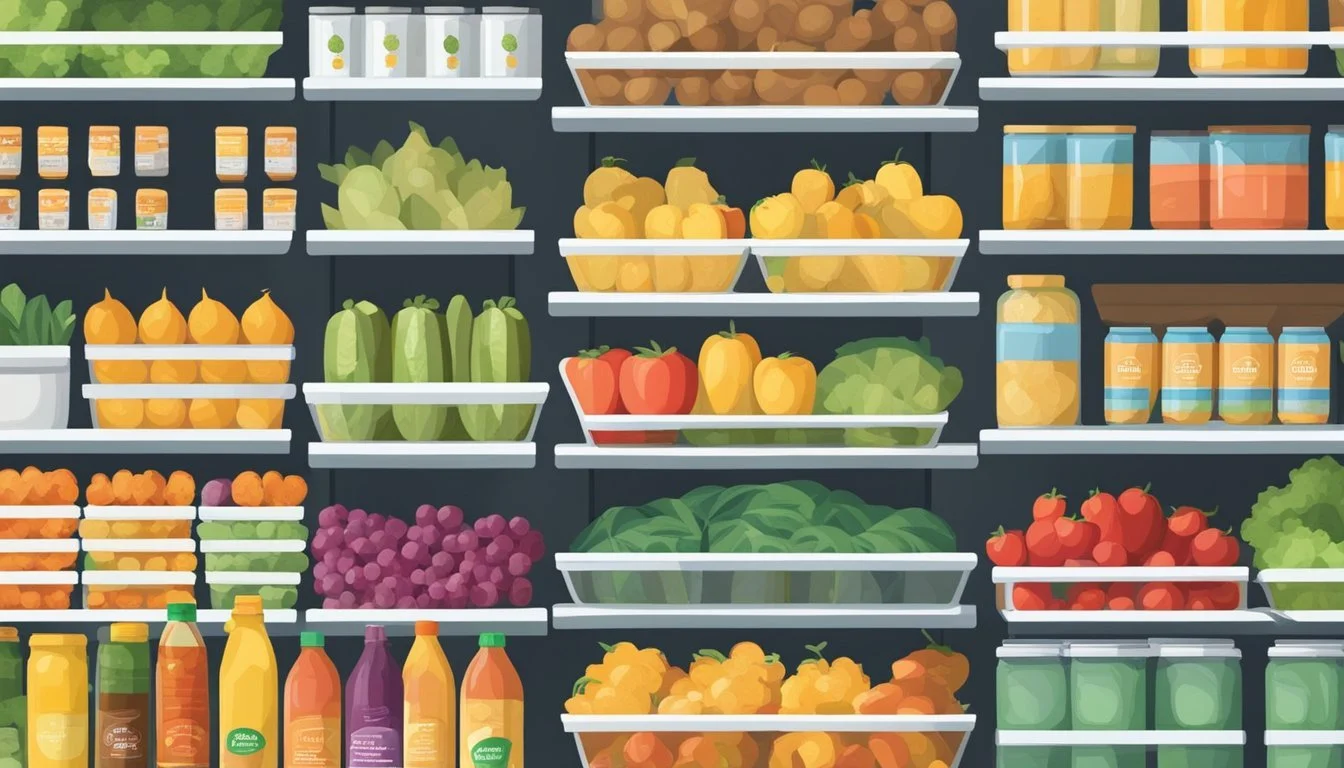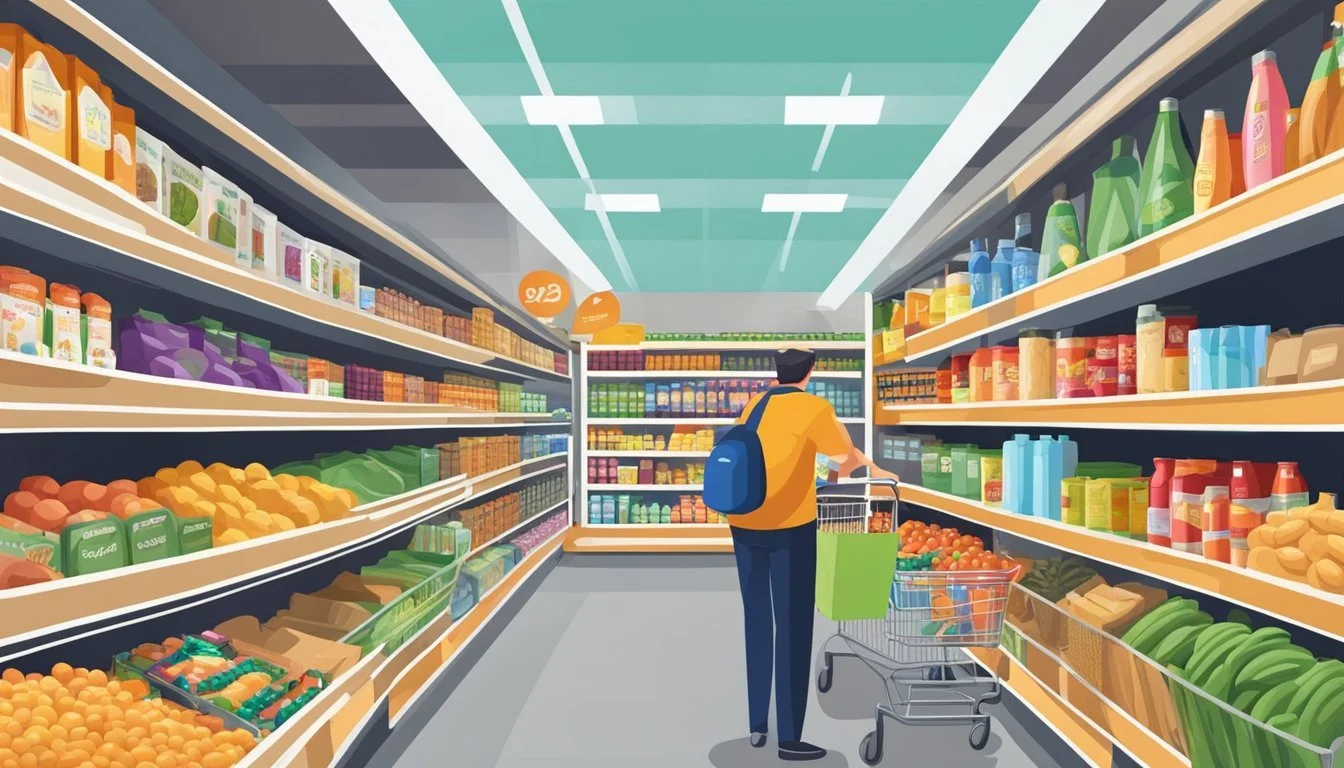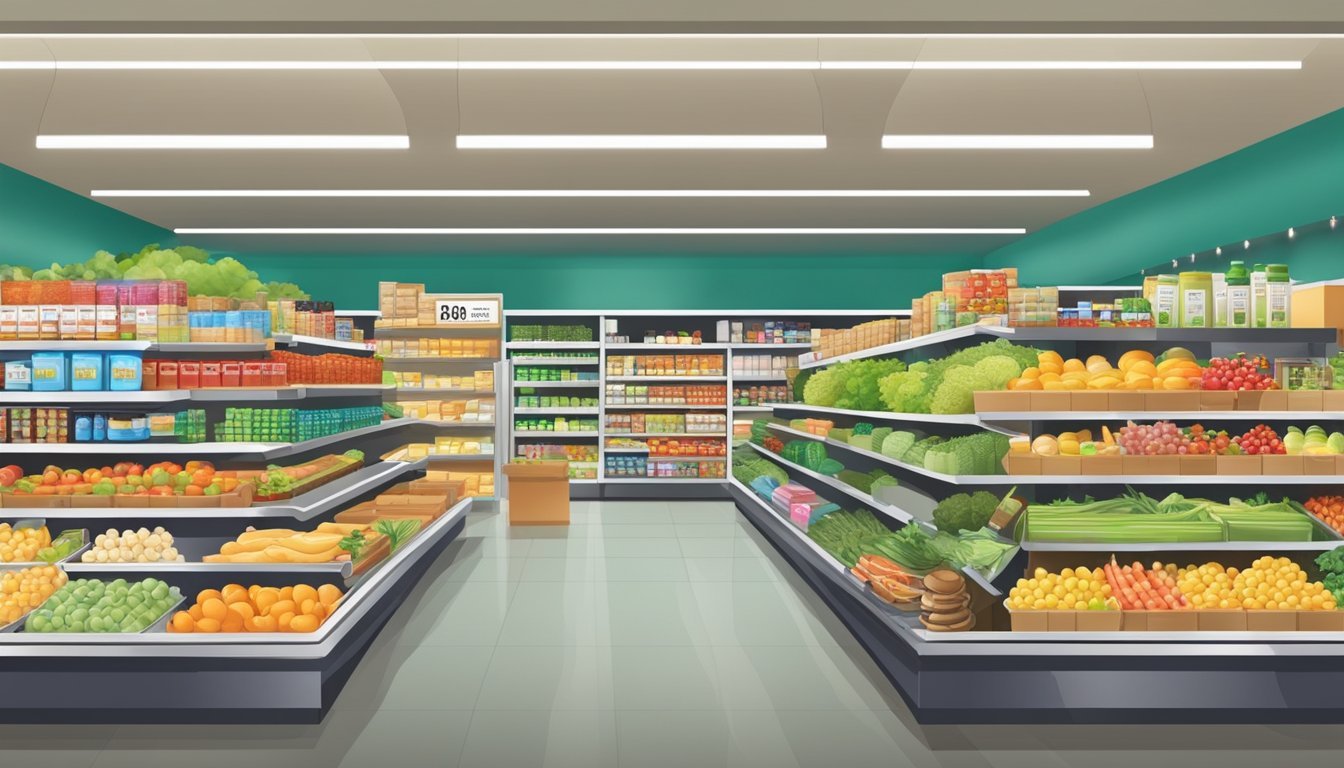Stretch Your Dollar: Top Budget-Friendly Grocery Stores Revealed
Grocery shopping on a budget requires strategic planning and knowing where to find the best deals. As food prices continue to rise, many consumers are seeking out value-focused grocery stores to stretch their dollars further.
The top budget-friendly grocery stores in the U.S. include Aldi, Walmart, Trader Joe's, and Lidl. These retailers consistently offer competitive prices on a wide range of products, from fresh produce to pantry staples. Each store has its own unique strengths and savings opportunities.
Shoppers can maximize their savings by combining store selection with smart shopping tactics. Visiting stores mid-week, comparing unit prices, and focusing on seasonal produce are effective ways to reduce grocery bills. With some research and flexibility, it's possible to eat well while keeping food costs manageable.
Understanding Grocery Store Pricing Strategies
Grocery stores employ various pricing tactics to attract customers and maximize profits. These strategies impact how much shoppers spend on their food and household items.
Competitive Pricing and Discounts
Grocery chains closely monitor their competitors' prices. Many stores offer price matching guarantees, allowing customers to get the lowest price without shopping around. Some retailers use loss leaders, selling popular items at or below cost to draw shoppers in. These loss leaders are often staples like milk or bread.
Loyalty programs provide personalized discounts to frequent shoppers. Members may receive digital coupons, earn points for future savings, or get exclusive deals. Volume discounts encourage bulk purchases, offering lower per-unit prices on larger quantities.
Promotions and Sales Cycles
Grocery stores run regular sales cycles, typically rotating deals every 1-2 weeks. Savvy shoppers can save by planning meals around these promotions. Many stores feature weekly specials in circular ads or mobile apps.
Holiday promotions offer deep discounts on seasonal items. After major holidays, remaining themed products are often heavily marked down. Some retailers use flash sales or limited-time offers to create urgency and boost impulse purchases.
BOGO (buy one, get one) deals are common for packaged goods and produce. Shoppers should check if it's truly free or half-price, as terms can vary.
Store Brands vs. Name Brands
Private label or store brand products typically cost 20-30% less than national brands. These items are often made by the same manufacturers as name brands but with different packaging.
Many stores offer tiered private label lines:
Value tier: Basic products at rock-bottom prices
Standard tier: Comparable quality to national brands
Premium tier: Gourmet or specialty items
Store brands allow retailers to control pricing and increase profit margins. They often place these items at eye level on shelves for maximum visibility.
Seasonal Variations in Food Prices
Produce prices fluctuate based on growing seasons and availability. Fruits and vegetables are usually cheapest when in season locally. Some examples:
Summer: Berries, melons, tomatoes
Fall: Apples, pumpkins, squash
Winter: Citrus fruits, root vegetables
Spring: Asparagus, peas, leafy greens
Meat prices can vary seasonally too. Turkey is often cheapest around Thanksgiving, while beef prices may rise in summer due to increased demand for grilling.
Some stores use dynamic pricing, adjusting costs based on factors like time of day, weather, or inventory levels. This practice is becoming more common with electronic shelf labels.
Identifying Budget-Friendly Grocery Stores
Finding affordable grocery stores can significantly reduce your food expenses. Many retailers offer competitive prices and budget-friendly options for savvy shoppers.
National Chains Known for Low Prices
ALDI and Lidl are top contenders for budget-conscious shoppers. These German-based chains offer no-frills shopping experiences with lower overhead costs, passing savings to customers. They focus on private-label products, which are often cheaper than name brands.
Walmart and Walmart Neighborhood Market provide consistently low prices on a wide range of groceries. Their buying power allows them to negotiate better deals with suppliers.
WinCo Foods, popular in the western United States, operates as an employee-owned company. This structure enables them to keep prices low while offering a large selection of bulk items.
Local and Regional Markets
Market Basket, primarily located in the northeastern U.S., is known for its "More for Your Dollar" slogan. The chain maintains low prices through efficient operations and limited advertising.
Local farmers' markets can offer fresh produce at competitive prices, especially when buying in-season items. Some markets accept SNAP benefits, making them accessible to more shoppers.
Ethnic grocery stores often provide affordable options for specialty ingredients and produce. These markets may have lower overhead costs and cater to price-sensitive communities.
Warehouse Clubs and Membership Stores
Costco and Sam's Club offer bulk purchases at discounted rates. While they require membership fees, frequent shoppers can recoup this cost through savings on groceries and household items.
These stores excel in providing deals on non-perishable goods, meat, and dairy products. Buying in larger quantities can lead to significant savings over time.
Some warehouse clubs offer additional perks like discounted gas prices or cash back on purchases, further offsetting membership costs.
Outlet and Overstock Grocery Retailers
Grocery Outlet specializes in selling overstock, closeout, and discontinued items at steep discounts. Their inventory changes frequently, offering a "treasure hunt" shopping experience.
Some regions have salvage grocery stores that sell damaged packaging or near-expiration products at deeply reduced prices. These stores can offer substantial savings for flexible shoppers.
Online retailers like Boxed and Thrive Market focus on discounted bulk and organic products, respectively. They can be cost-effective alternatives to traditional grocery shopping, especially when combined with promotional offers.
Effective Shopping Strategies
Smart grocery shopping involves tactics to maximize savings while getting quality food. Proper planning, savvy use of technology, and leveraging store programs can significantly reduce costs.
Benefits of Bulk Purchasing
Buying in bulk often leads to substantial savings. Many grocery stores offer discounts on larger quantities. Staples like rice, pasta, and canned goods have long shelf lives, making them ideal for bulk purchases.
Bulk buying reduces packaging waste and trips to the store. This saves time and transportation costs. Some stores have dedicated bulk sections with bins of grains, nuts, and spices.
Consider storage space before bulk purchases. Perishables may spoil if not used quickly. Split bulk items with friends or family to share savings and avoid waste.
Utilizing Coupons and Loyalty Programs
Coupons remain a powerful tool for budget shoppers. Digital coupons are increasingly popular, easily loaded onto store cards or apps. Many stores offer loyalty programs with personalized discounts and points systems.
Some programs provide cash back or fuel discounts. Credit cards may offer additional rewards for grocery purchases. Combining coupons with sales can lead to significant savings.
Loyalty programs often give exclusive access to special deals. They may provide early sale notifications or member-only pricing. Be strategic and only use coupons for items you actually need.
Planning with a Budget Grocery List
A well-planned grocery list is crucial for staying on budget. Write down needed items throughout the week. Check pantry and fridge contents before shopping to avoid duplicates.
Organize the list by store layout to shop efficiently. Include quantities to prevent overbuying. Set a spending limit for each category (produce, meat, etc.).
Consider meal planning to guide list creation. This reduces impulse purchases and food waste. Include versatile ingredients that work in multiple recipes.
Store brands often offer quality products at lower prices. Compare ingredients and nutrition facts with name brands. Be flexible and adjust the list based on sales and seasonal availability.
Shopping with Mobile Apps and Technology
Grocery apps have revolutionized budget shopping. Many offer digital coupons, price comparisons, and personalized deals. Some track spending and help create shopping lists.
Price comparison apps find the best deals across different stores. Cashback apps provide rebates on specific items. Some stores have dedicated apps with exclusive offers and easy checkout options.
Digital receipts make expense tracking simpler. Apps can alert users to expiring food items, reducing waste. Some even suggest recipes based on sale items or pantry contents.
Use barcode scanners to quickly check prices and nutritional info. Smart home devices can add items to shopping lists via voice commands. Embrace these tools to streamline the shopping process and maximize savings.
Key Product Categories to Focus On
Budget-conscious shoppers can maximize savings by prioritizing certain product categories. These areas offer the best value while providing essential nutrition and versatility for meal planning.
Staple Carbohydrates and Grains
Rice, pasta, and beans form the foundation of many affordable meals. Brown rice offers excellent nutritional value at a low cost. Whole wheat pasta provides fiber and complex carbohydrates.
Dried beans are incredibly economical and protein-rich. Look for sales on large bags of these items. Oats make for an inexpensive breakfast option.
Store-brand cereals often match the quality of name brands at lower prices. Flour, cornmeal, and other baking supplies allow for homemade breads and baked goods at a fraction of prepared costs.
Fresh Produce and Seasonal Items
Fruits and vegetables are crucial for a balanced diet. Focus on what's in season for the best prices and quality. Apples, bananas, and oranges tend to be affordable year-round.
Carrots, onions, and potatoes offer great value and versatility. Leafy greens like spinach and kale pack a nutritional punch. Frozen vegetables and fruits provide convenience without sacrificing nutrition.
Consider shopping at local farmers markets for competitive prices on fresh produce. Buy in bulk when prices are low and freeze excess for later use.
Meat and Alternatives
Chicken is often the most budget-friendly meat option. Look for sales on whole chickens or value packs of parts. Ground beef can be stretched in many recipes.
Pork shoulder and chuck roast are economical cuts for slow cooking. Eggs are a versatile and affordable protein source. Canned tuna and salmon offer omega-3s at a low cost.
Plant-based proteins like lentils and chickpeas provide excellent nutrition at pennies per serving. Tofu is another cost-effective option for those seeking meat alternatives.
Dairy and Frozen Goods
Milk, yogurt, and cheese are essential sources of calcium and protein. Look for store-brand options to save money. Buy larger quantities of cheese and freeze portions for later use.
Frozen vegetables retain nutrients and are often cheaper than fresh, especially out of season. Frozen fruits work well in smoothies and baked goods.
Stock up on frozen pizza, vegetables, and prepared meals when on sale for quick, budget-friendly dinner options. Ice cream and frozen treats can be found at good prices in store brands.
Maximizing Savings on Specialty Items
Specialty items often carry higher price tags, but savvy shoppers can still find ways to enjoy these products without breaking the bank. Strategic approaches and careful selection can lead to significant savings on premium groceries.
Shopping for Organic and Gluten-Free
Organic and gluten-free products tend to be more expensive, but budget-conscious consumers have options. Many stores now offer their own organic store-brand products at lower prices than national brands. These items often meet the same quality standards at a fraction of the cost.
For gluten-free options, buying in bulk can lead to savings. Larger packages of gluten-free flours or pasta typically cost less per unit. Some stores have dedicated gluten-free sections where comparing prices is easier.
Seasonal organic produce is often more affordable. Shoppers should focus on fruits and vegetables that are in season and locally sourced when possible. This approach ensures fresher products at better prices.
Alcohol, Cheese, and Delicatessen
Alcohol and specialty cheeses can quickly inflate a grocery bill. To save on wine, look for store-brand options or lesser-known varieties that offer good value. Many stores run periodic sales on wines, making it an ideal time to stock up.
For cheese lovers, buying blocks instead of pre-sliced or shredded varieties can result in savings. Deli counters often offer small samples, allowing customers to taste before committing to a purchase.
Some stores have "cheese remnants" bins with smaller pieces at discounted prices. These are perfect for trying new varieties without the full cost.
Prepared Foods and Convenience Options
Prepared foods offer convenience but often at a premium. To save money, focus on partially prepared items that require some at-home assembly or cooking. For example, pre-cut vegetables or marinated meats can be more cost-effective than fully prepared meals.
Store-brand frozen foods are typically cheaper than their name-brand counterparts and often match in quality. Look for sales on frozen vegetables, fruits, and prepared meals to stock up.
Ground meat and whole chickens are versatile and economical choices. They can be portioned and frozen for multiple meals, reducing the need for expensive pre-packaged options.
By making strategic choices in these specialty categories, shoppers can enjoy premium items while adhering to a budget.
Evaluating Additional Store Offerings
When comparing budget-friendly grocery stores, looking beyond just prices can reveal significant value. Store layouts, rewards programs, and customer service all play crucial roles in the overall shopping experience and potential savings.
The Role of Convenience and Store Layout
Well-designed store layouts save time and money. Wide aisles allow easy navigation with shopping carts. Logical product groupings help shoppers find items quickly. Some budget stores prioritize efficiency with a no-frills layout.
Clear signage and organized shelves reduce stress and impulse buys. Clean, well-lit spaces create a positive atmosphere. Conveniently placed basics like milk and bread can speed up quick trips.
Strategic placement of sale items may increase savings opportunities. Self-checkout options can reduce wait times for those with just a few items.
Fuel Points and Supplementary Savings
Many grocery chains offer fuel rewards programs. Shoppers earn points on purchases redeemable for gas discounts. This can lead to significant savings for frequent drivers.
Some stores provide digital coupons through mobile apps or loyalty cards. These often stack with manufacturer coupons for extra savings. Credit card partnerships may offer cashback on grocery purchases.
Bulk sections allow customers to buy only what they need, reducing waste. Some stores offer reusable bag credits, saving money and reducing plastic use.
Customer Service and Shopping Experience
Knowledgeable, friendly staff can enhance the shopping experience. They can help locate items, explain promotions, and resolve issues quickly. Well-trained employees at checkout ensure accurate pricing and proper bagging.
Clean stores with functioning equipment show respect for customers. Regularly sanitized carts and baskets promote a healthy shopping environment. Adequate staffing during peak hours reduces long waits.
Some budget stores offer free samples, allowing customers to try before buying. Others provide recipe ideas or meal planning assistance to help shoppers maximize their budgets.
Understanding the Impact of Economic Factors
Economic factors significantly influence grocery shopping behavior and store selection. Consumers adapt their buying habits in response to changing financial conditions, while retailers adjust strategies to remain competitive and meet evolving customer needs.
Inflation and Its Effect on Grocery Shopping
Rising food prices due to inflation have a profound impact on consumer behavior. As costs increase, shoppers become more price-conscious and seek ways to stretch their budgets. Many consumers turn to discount stores, buy in bulk, or opt for private label products to save money.
Retailers respond by offering more promotions and expanding their store brand options. Some grocery chains increase the frequency and depth of sales to attract budget-conscious shoppers. Others focus on enhancing their loyalty programs to provide additional value and incentivize customer retention.
Regional Pricing Variations
Grocery prices can vary significantly across different regions due to factors like transportation costs, local competition, and regional economic conditions. Rural areas often face higher prices due to limited competition and increased distribution expenses.
Urban centers typically offer more competitive pricing due to a higher concentration of retailers. However, operating costs in cities can drive up prices in some locations. Savvy shoppers may find better deals by exploring stores in neighboring areas or suburbs.
Some retailers use regional pricing strategies to remain competitive in specific markets. This approach allows them to adjust prices based on local economic conditions and consumer demographics.
Consumer Preference and Retailer Indexes
Market research firms like dunnhumby compile retailer preference indexes to gauge consumer sentiment towards different grocery chains. These indexes consider factors such as price perception, quality, convenience, and overall shopping experience.
Retailers use these insights to refine their marketing strategies and improve customer satisfaction. Top-performing stores often excel in areas like competitive pricing, product selection, and customer service.
Consumer preferences shift during economic downturns, with price becoming a more critical factor. Discount chains and stores known for value tend to see increased traffic during these periods. Traditional grocers may adjust their offerings and pricing to compete more effectively with discount retailers.
The Digital Evolution of Grocery Shopping
The grocery industry has undergone a dramatic transformation in recent years, embracing digital technologies to meet changing consumer needs. Online platforms, mobile apps, and new delivery options have reshaped how people shop for food and household essentials.
Online Marketplaces and Traditional Retailers
Major ecommerce players like Amazon have entered the grocery space, offering convenient online ordering and delivery. Traditional grocers have also launched digital offerings to compete. Many stores now provide mobile apps that allow customers to create shopping lists, access digital coupons, and place orders for pickup or delivery.
Loyalty programs have gone digital too. Shoppers can now earn and redeem points through apps, receiving personalized offers based on their purchase history.
Some grocers have partnered with third-party services to enable same-day delivery. This allows them to reach online shoppers without building their own delivery infrastructure.
Government Standards and Assistance Programs
The USDA has updated policies to allow SNAP (food stamp) benefits to be used for online grocery purchases from approved retailers. This expands access for low-income households.
New regulations have been implemented for food safety and quality standards in ecommerce. These cover proper handling, storage, and delivery of perishable items ordered online.
The government has also provided guidance on nutrition labeling and allergen information for online grocery listings to ensure consumers have key details when shopping digitally.
Consumer Trends in Digital Grocery Purchases
Convenience is a major driver of online grocery adoption. Busy Americans appreciate the time savings of not having to visit a physical store.
Popular items for digital purchase include shelf-stable goods, household products, and pre-packaged foods. Fresh produce remains an area where many consumers prefer to select items in person.
Mobile devices are increasingly used for grocery shopping. Many consumers browse products, compare prices, and place orders through smartphone apps while on the go.
Subscription services for recurring grocery deliveries have gained traction, especially for household staples and frequently purchased items.

